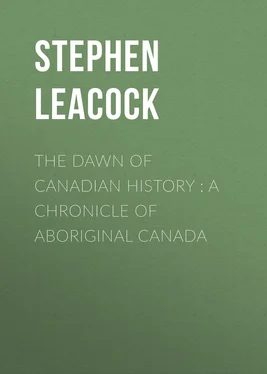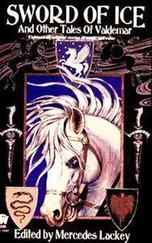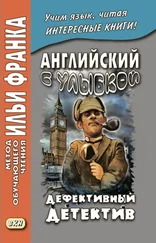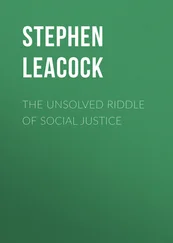Stephen Leacock - The Dawn of Canadian History - A Chronicle of Aboriginal Canada
Здесь есть возможность читать онлайн «Stephen Leacock - The Dawn of Canadian History - A Chronicle of Aboriginal Canada» — ознакомительный отрывок электронной книги совершенно бесплатно, а после прочтения отрывка купить полную версию. В некоторых случаях можно слушать аудио, скачать через торрент в формате fb2 и присутствует краткое содержание. Жанр: Путешествия и география, История, foreign_edu, foreign_antique, foreign_prose, на английском языке. Описание произведения, (предисловие) а так же отзывы посетителей доступны на портале библиотеки ЛибКат.
- Название:The Dawn of Canadian History : A Chronicle of Aboriginal Canada
- Автор:
- Жанр:
- Год:неизвестен
- ISBN:нет данных
- Рейтинг книги:4 / 5. Голосов: 1
-
Избранное:Добавить в избранное
- Отзывы:
-
Ваша оценка:
- 80
- 1
- 2
- 3
- 4
- 5
The Dawn of Canadian History : A Chronicle of Aboriginal Canada: краткое содержание, описание и аннотация
Предлагаем к чтению аннотацию, описание, краткое содержание или предисловие (зависит от того, что написал сам автор книги «The Dawn of Canadian History : A Chronicle of Aboriginal Canada»). Если вы не нашли необходимую информацию о книге — напишите в комментариях, мы постараемся отыскать её.
The Dawn of Canadian History : A Chronicle of Aboriginal Canada — читать онлайн ознакомительный отрывок
Ниже представлен текст книги, разбитый по страницам. Система сохранения места последней прочитанной страницы, позволяет с удобством читать онлайн бесплатно книгу «The Dawn of Canadian History : A Chronicle of Aboriginal Canada», без необходимости каждый раз заново искать на чём Вы остановились. Поставьте закладку, и сможете в любой момент перейти на страницу, на которой закончили чтение.
Интервал:
Закладка:
Stephen Leacock
The Dawn of Canadian History : A Chronicle of Aboriginal Canada
CHAPTER I
BEFORE THE DAWN
We always speak of Canada as a new country. In one sense, of course, this is true. The settlement of Europeans on Canadian soil dates back only three hundred years. Civilization in Canada is but a thing of yesterday, and its written history, when placed beside the long millenniums of the recorded annals of European and Eastern peoples, seems but a little span.
But there is another sense in which the Dominion of Canada, or at least part of it, is perhaps the oldest country in the world. According to the Nebular Theory the whole of our planet was once a fiery molten mass gradually cooling and hardening itself into the globe we know. On its surface moved and swayed a liquid sea glowing with such a terrific heat that we can form no real idea of its intensity. As the mass cooled, vast layers of vapour, great beds of cloud, miles and miles in thickness, were formed and hung over the face of the globe, obscuring from its darkened surface the piercing beams of the sun. Slowly the earth cooled, until great masses of solid matter, rock as we call it, still penetrated with intense heat, rose to the surface of the boiling sea. Forces of inconceivable magnitude moved through the mass. The outer surface of the globe as it cooled ripped and shrivelled like a withering orange. Great ridges, the mountain chains of to-day, were furrowed on its skin. Here in the darkness of the prehistoric night there arose as the oldest part of the surface of the earth the great rock bed that lies in a huge crescent round the shores of Hudson Bay, from Labrador to the unknown wilderness of the barren lands of the Coppermine basin touching the Arctic sea. The wanderer who stands to-day in the desolate country of James Bay or Ungava is among the oldest monuments of the world. The rugged rock which here and there breaks through the thin soil of the infertile north has lain on the spot from the very dawn of time. Millions of years have probably elapsed since the cooling of the outer crust of the globe produced the solid basis of our continents.
The ancient formation which thus marks the beginnings of the solid surface of the globe is commonly called by geologists the Archaean rock, and the myriads of uncounted years during which it slowly took shape are called the Archaean age. But the word 'Archaean' itself tells us nothing, being merely a Greek term meaning 'very old.' This Archaean or original rock must necessarily have extended all over the surface of our sphere as it cooled from its molten form and contracted into the earth on which we live. But in most places this rock lies deep under the waters of the oceans, or buried below the heaped up strata of the formations which the hand of time piled thickly upon it. Only here and there can it still be seen as surface rock or as rock that lies but a little distance below the soil. In Canada, more than anywhere else in the world, is this Archaean formation seen. On a geological map it is marked as extending all round the basin of Hudson Bay, from Labrador to the shores of the Arctic. It covers the whole of the country which we call New Ontario, and also the upper part of the province of Quebec. Outside of this territory there was at the dawn of time no other 'land' where North America now is, except a long island of rock that marks the backbone of what are now the Selkirk Mountains and a long ridge that is now the mountain chain of the Alleghanies beside the Atlantic slope.
Books on geology trace out for us the long successive periods during which the earth's surface was formed. Even in the Archaean age something in the form of life may have appeared. Perhaps vast masses of dank seaweed germinated as the earliest of plants in the steaming oceans. The water warred against the land, tearing and breaking at its rock formation and distributing it in new strata, each buried beneath the next and holding fast within it the fossilized remains that form the record of its history. Huge fern plants spread their giant fronds in the dank sunless atmospheres, to be buried later in vast beds of decaying vegetation that form the coal-fields of to-day.
Animal life began first, like the plants, in the bosom of the ocean. From the slimy depths of the water life crawled hideous to the land. Great reptiles dragged their sluggish length through the tangled vegetation of the jungle of giant ferns.
Through countless thousands of years, perhaps, this gradual process went on. Nature, shifting its huge scenery, depressed the ocean beds and piled up the dry land of the continents. In place of the vast 'Continental Sea,' which once filled the interior of North America, there arose the great plateau or elevated plain that now runs from the Mackenzie basin to the Gulf of Mexico. Instead of the rushing waters of the inland sea, these waters have narrowed into great rivers—the Mackenzie, the Saskatchewan, the Mississippi—that swept the face of the plateau and wore down the surface of the rock and mountain slopes to spread their powdered fragments on the broad level soil of the prairies of the west. With each stage in the evolution of the land the forms of life appear to have reached a higher development. In place of the seaweed and the giant ferns of the dawn of time there arose the maples, the beeches, and other waving trees that we now see in the Canadian woods. The huge reptiles in the jungle of the Carboniferous era passed out of existence. In place of them came the birds, the mammals,—the varied types of animal life which we now know. Last in the scale of time and highest in point of evolution, there appeared man.
We must not speak of the continents as having been made once and for all in their present form. No doubt in the countless centuries of geological evolution various parts of the earth were alternately raised and depressed. Great forests grew, and by some convulsion were buried beneath the ocean, covered deep as they lay there with a sediment of earth and rock, and at length raised again as the waters retreated. The coal-beds of Cape Breton are the remains of a forest buried beneath the sea. Below the soil of Alberta is a vast jungle of vegetation, a dense mass of giant fern trees. The Great Lakes were once part of a much vaster body of water, far greater in extent than they now are. The ancient shore-line of Lake Superior may be traced five hundred feet above its present level.
In that early period the continents and islands which we now see wholly separated were joined together at various points. The British islands formed a connected part of Europe. The Thames and the Rhine were one and the same river, flowing towards the Arctic ocean over a plain that is now the shallow sunken bed of the North Sea. It is probable that during the last great age, the Quaternary, as geologists call it, the upheaval of what is now the region of Siberia and Alaska, made a continuous chain of land from Asia to America. As the land was depressed again it left behind it the islands in the Bering Sea, like stepping-stones from shore to shore. In the same way, there was perhaps a solid causeway of land from Canada to Europe reaching out across the Northern Atlantic. Baffin Island and other islands of the Canadian North Sea, the great sub-continent of Greenland, Iceland, the Faroe Islands, and the British Isles, all formed part of this continuous chain.
As the last of the great changes, there came the Ice Age, which profoundly affected the climate and soil of Canada, and, when the ice retreated, left its surface much as we see it now. During this period the whole of Canada from the Atlantic to the Rocky Mountains lay buried under a vast sheet of ice. Heaped up in immense masses over the frozen surface of the Hudson Bay country, the ice, from its own dead weight, slid sidewise to the south.
Читать дальшеИнтервал:
Закладка:
Похожие книги на «The Dawn of Canadian History : A Chronicle of Aboriginal Canada»
Представляем Вашему вниманию похожие книги на «The Dawn of Canadian History : A Chronicle of Aboriginal Canada» списком для выбора. Мы отобрали схожую по названию и смыслу литературу в надежде предоставить читателям больше вариантов отыскать новые, интересные, ещё непрочитанные произведения.
Обсуждение, отзывы о книге «The Dawn of Canadian History : A Chronicle of Aboriginal Canada» и просто собственные мнения читателей. Оставьте ваши комментарии, напишите, что Вы думаете о произведении, его смысле или главных героях. Укажите что конкретно понравилось, а что нет, и почему Вы так считаете.












